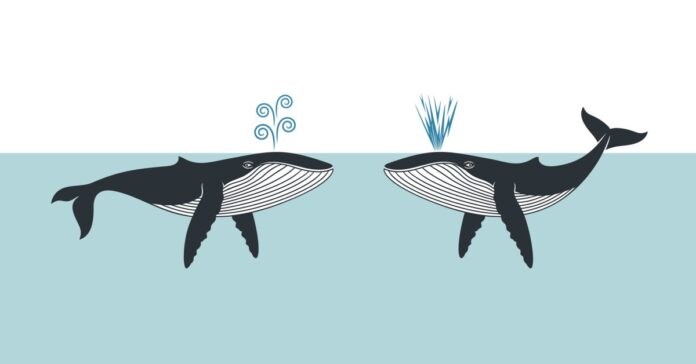Researchers are Using AI To Understand What Animals Are Saying[19459000
Iis reshaping So far, AI has been used primarily to improve the lives of[194590WhatifwehumansusedAItounderstandthenonhumanswithwhomourplanetis
This is just the beginning of a portal into this world Machine learning and robotics advances have made it possible to study nonhuman animal communication in unprecedented Researchers are gaining insight into the unique names elephants give Scientists have the ability to analyze and assemble the massive datasets required to move beyond New technologies reveal messages that are beyond the reach of human sense
Fifty-years ago, humanity began another planetary Roger and Katy Payne recorded the intricate songs that humpbacks use to Science inspired wonder. Wonder fostered empathy. Empathy rekindled the hope that
Scientific wonder and discovery has influenced collective decisions that have The scale, speed, and stakes of today’s technological, eco-social, AI and other cutting edge tools can be used to protect and understand nonhuman animals. However Will AI-powered devices help us reconnect with each other and nature? Or will they further damage our fragile ties with the web of life on Earth? Will listening to nonhumans inspire greater protection of the world beyond humans? Or will the data being collected on nonhumans be used to further commodify
According to science journalist Ed Yong “an enormous world The messages of nonhuman animals will strengthen the case for their right. Language is often citedas a unique human trait to But what if whale sounds are expressions of an ancient, refined intelligence predating humans–“the equivalent of epic poetry, history, and elaborate codes of social interaction,” as scientist Carl Sagan pondered 52 years ago? Could this help extend some of the rights normally bestowed on humans to nonhuman animals with complex languages?
These are questions evaluated by Project CETI (Cetacean Translation Initiative) and MOTH (the More-Than-Human Life Program at NYU Law) as part of an interdisciplinary effort to consider the legal implications of translating nonhuman animal communication. CETI’s research on sperm whales demonstrates that these highly auditory and social beings have communication systems with linguistic complexity. MOTH’s research suggests that these findings offer solid evidence for strengthening the implementation of existing laws, influencing court rulings in different countries, and even catalyzing new rights for sperm whales and other cetaceans.
For instance, as MOTH and CETI argue in a forthcoming article in the journal Ecology Law Quarterly, a better comprehension of cetacean communication would provide additional evidence about the existential threats to cetaceans stemming from underwater noise from ship traffic, seismic surveying for oil, and deep-sea mining. Such evidence could support the view that incessant loud noise amounts to torture or cruel treatment towards cetaceans, in turn galvanizing support for a new right to be free from such harm. Understanding the complexity and content of their communication could reveal the scale of the suffering that comes from muffling their voices as well as the physical injuries, deafness, and atypical strandings that have been associated with underwater noise. It would also illuminate the richness of their social lives—the carefully orchestrated collaborative behaviors, unique dialects, and cultural traits of different whale clans—that could bolster arguments for cetaceans’ right to cultural preservation.
Importantly, this new science could converge with Indigenous peoples’ ancestral knowledge of and relations with cetaceans, which recently led Indigenous leaders of New Zealand, Tahiti, and the Cook Islands to sign a treaty recognizing the legal personhood of cetaceans.
However, these scientific endeavors demand caution. Without legal and ethical guardrails, we risk using these technologies in ways that harm the very beings we aim to understand. Scientists motivated by a desire to protect the rights and well-being of nonhuman animals must also understand how those rights implore us to slow down and approach this work with the values of care and caution, prioritizing the welfare of animals over the thrill of discovery. History warns us of the unintended consequences of technology applied without foresight. Although microphones, hydrophones, cameras and drones have been employed to understand and safeguard nonhuman animals, they have also been misused to survey, harm, and experiment on them.
Scientists and organizations engaging in AI-assisted animal communication studies and activities need to adopt stringent protocols that prioritize the interests of nonhuman animals over other objectives; data governance rules that protect them from potential harms by third parties; and well-established legal standards like the precautionary principle, which requires measures to prevent harms even in the absence of scientific certainty about those impacts. The “3R: framework also offers a starting point, requiring that researchers replace nonhuman animals with alternatives where possible, reduce the number of nonhuman animals materially affected by research, and refine research to minimize harms and potential threats to nonhuman animal subjects.
If we don’t take these precautions, then we The same tools used to translate whale songs can be weaponized for manipulating nonhuman animals
In the coming years, humanity’s relationship with nonhuman This moment, if approached with caution, care, and a set of ethical and
We have never seen such a level of wonder and even Sagan concluded, “The Cetacea have a great lesson for us.” The lesson is not about dolphins and whales, but us. We will soon find




